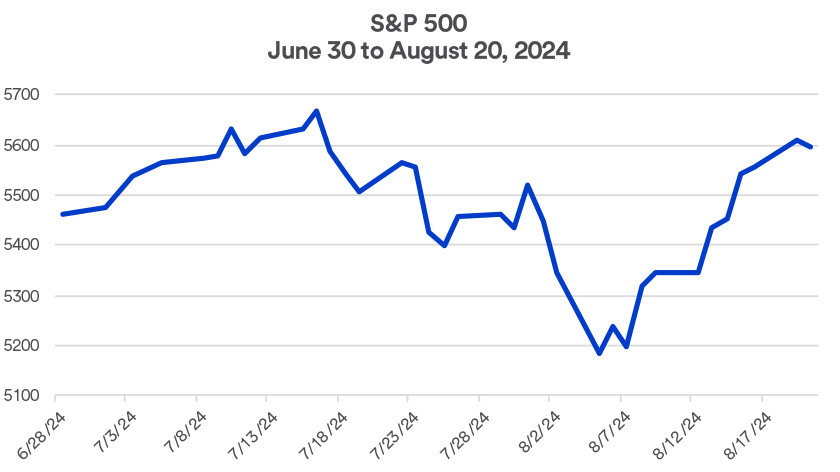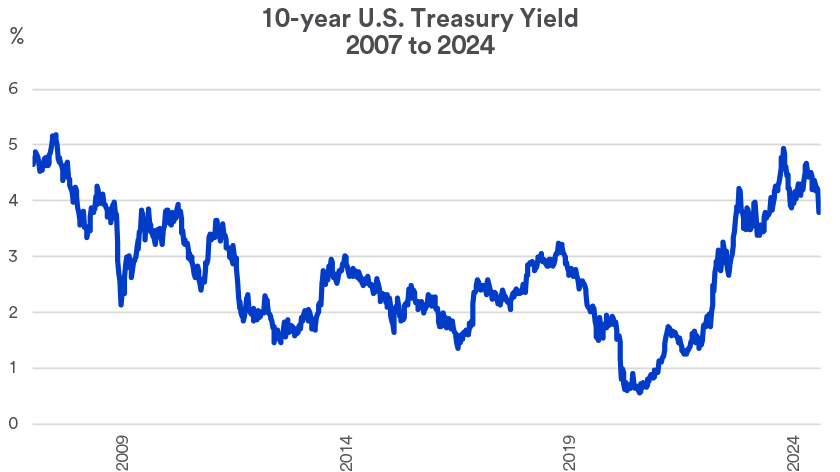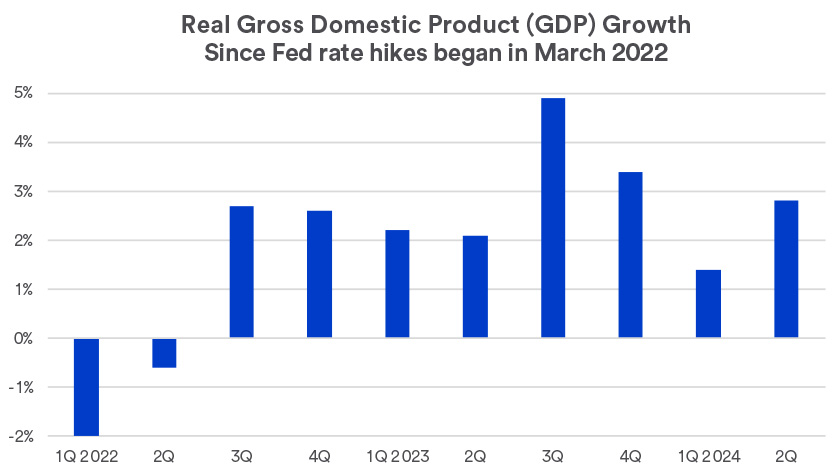- The direction of corporate earnings. Earnings, or a company's profits, are typically one of the biggest drivers of capital market performance. “S&P 500 earnings have grown for four straight quarters,” says Haworth. “In contrast to an earnings contraction that was underway in the first half of 2023.” Haworth notes that the earnings outlook for the rest of 2024 remains positive, and markets are even more optimistic about earnings prospects for 2025. “But it’s a stock-by-stock story, and not every company is on the same earnings growth track.” Earnings growth is critical as it helps lay the groundwork for rising stock prices. If anticipated earnings growth fails to materialize, Haworth says equity investors could face a more challenging environment.
While these factors are likely to have the greatest impact on equity and fixed income markets, investors need to be aware that other events can temporarily impact the markets and potentially contribute to investor uncertainty. Read more about our capital market perspective in our quarterly investment outlook.
Capital markets explained
Here are answers to some fundamental questions that may help you better understand capital markets and how they work.
What are capital markets?
Capital markets are a way to bring together individuals or institutions with money (also known as capital) they wish to invest, and various entities that seek money to underwrite costs to meet specific purposes. Capital markets also facilitate the issuance of securities on an exchange, where stocks and bonds are offered by those seeking capital, to be purchased by investors seeking to put capital to work.
For example, government entities regularly issue debt securities (bonds) to meet costs for major capital projects or, in the case of the federal government, finance day-to-day expenditures. Investors, in effect, lend money to the government entity by purchasing a bond. The borrower is required to pay interest on a timely basis and repay principal when the bond matures.
What are types of capital markets?
Capital markets are most commonly made up of stock and bond markets.
- Stock (equities) is issued by a corporation, providing an ownership stake in the firm. Individuals and institutions can purchase stock in the firm, obtain voting rights as a shareholder, and be a recipient of dividends paid out by the corporation from its earnings (profits). Stock values can rise and fall, and investors can re-sell shares through an exchange on the secondary market, which is where bonds or shares of stock are bought and sold after their initial public offering.
- A variety of entities issue bonds, such as governments, school districts and corporations. By purchasing a bond, the investor becomes a lender and is due interest and principal payments. Bondholders always take priority over stockholders when it comes to repayment, should the entity that issued the security face financial difficulty, such as bankruptcy.
How do capital markets work?
A key to capital markets is the issuance of securities. Entities seeking to raise capital will issue debt or equity securities that are exchanged with investors. A corporation, for example, may issue new shares of stock, at a set price. However, once on the open market, the price of a security is generally always changing, reflecting demand in the market.
When raising capital, companies or entities may issue new shares of a stock or bonds, with proceeds from investors going directly to the issuer to meet its current financial purposes. Original issues of stocks and bonds are not always accessible to individual investors, such as in an initial public offering (IPO) of stock. Most individuals purchase stocks on the secondary market, where those who previously purchased stocks or bonds can re-sell the securities they hold.
How do capital markets differ from financial markets?
There are similarities between the two; however, capital markets typically refer to the issuance of new securities to raise capital, while financial markets can refer to all forms of securities trading.
Financial markets encompass a wide variety of exchanges involving traditional securities like stocks and bonds, as well as other types of assets and contracts. Most individuals trade securities on the secondary market.
Talk to your financial professional
As you assess your own financial goals, understanding the current and anticipated performance of capital markets may help you more effectively position your assets to achieve your objectives. Discuss your circumstances with your wealth professional to help determine the best approach for you.
Our investment strategies are designed to weather all types of market cycles. Learn about our investment management approach.






